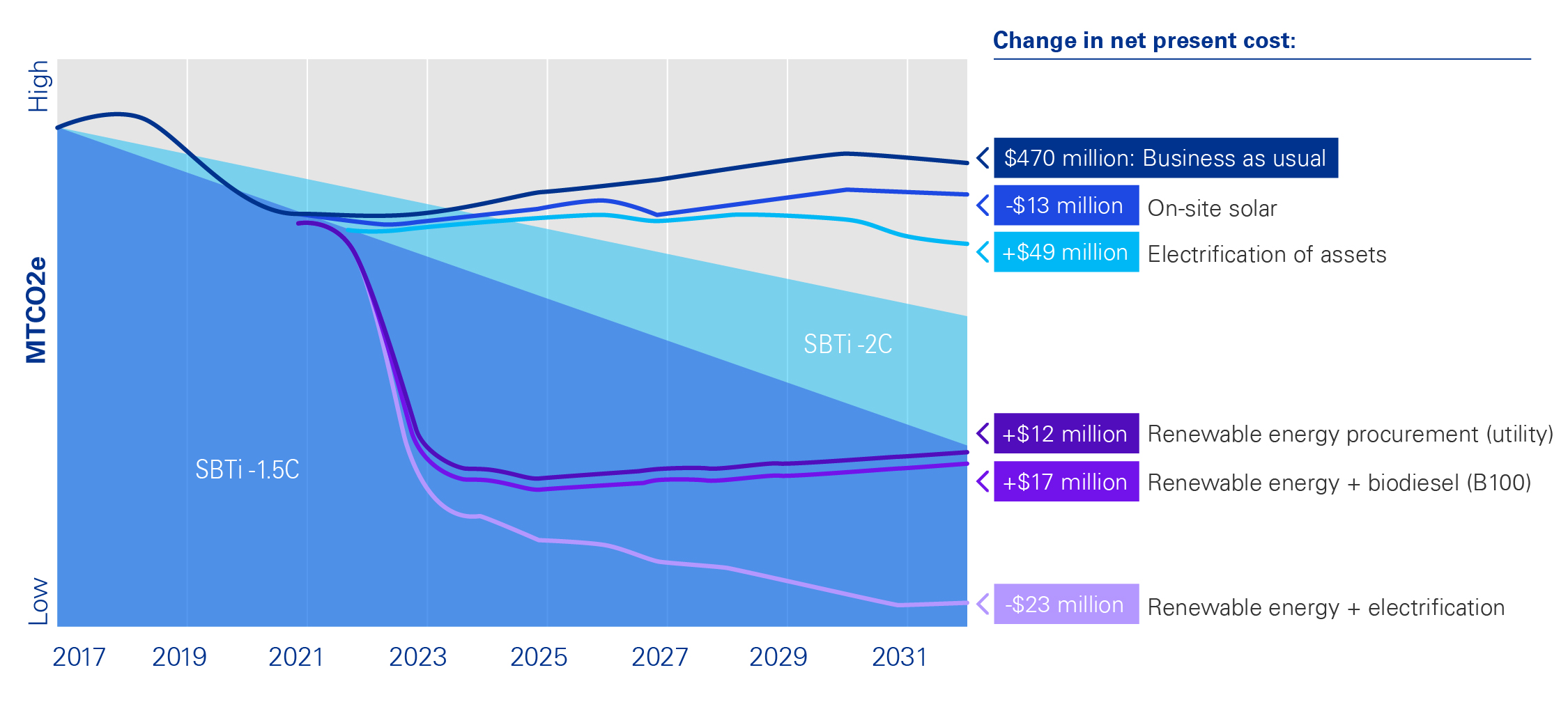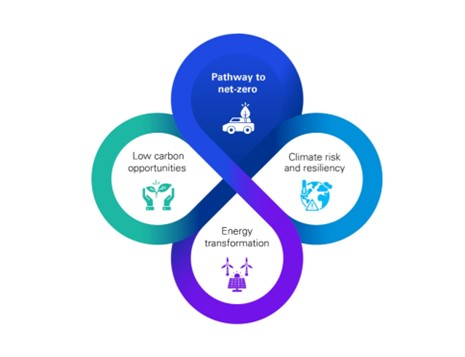A U.S. port authority had bold ambitions for its decarbonization plan. It wanted to keep pace with the net-zero goals of its large customers, boost efficiency, get ahead of future regulations that might require deep emission reductions, and become an industry leader by contributing to UN Sustainable Development Goals.
The first step was gauging current fossil fuel use. This was complicated by the inability to track the fuel consumption and idle time of decades-old vehicles. Using fuel consumption estimates, additional data, analytics, and our decarbonization pathways capability, we helped the port calculate its carbon footprint at the asset level and make decisions about how to achieve its climate ambitions.
Its options fell into two categories: which assets to electrify (and when), and where to get the electricity to power the new equipment. Local providers offered renewable choices at low cost. We considered total cost of ownership and a range of options, such as switching to electric fleets in phases.
Our analysis concluded that tapping renewable energy and electrifying some of the port’s equipment could reduce overall scope 1 and 2 emissions3 over time by more than 90 percent, while cutting costs by more than $20 million annually (see Exhibit 2).
Using these analyses, senior leaders could then agree on a future state where the port would switch to 100 percent renewable energy, reduce greenhouse gas emissions by two- thirds by 2032, and achieve net-zero carbon emissions by 2040.
As the company launches projects based on its new roadmap, it is tracking progress toward targets and providing employees, customers, and local communities with clear performance metrics. It has already announced 14 percent reductions in CO2e emissions since its baseline year of 2017, and a 44 percent decline in scope 1 emissions as it transitions to hybrid and electric straddle carriers.




